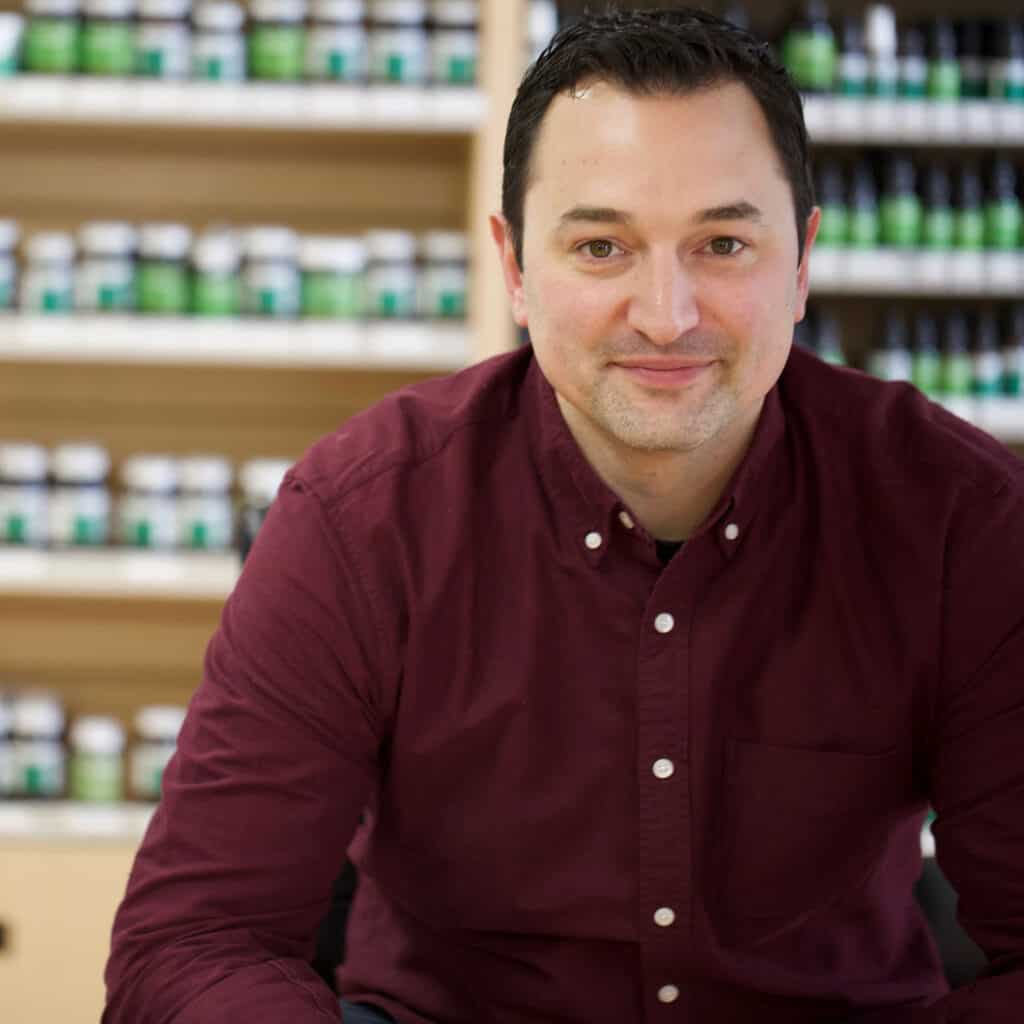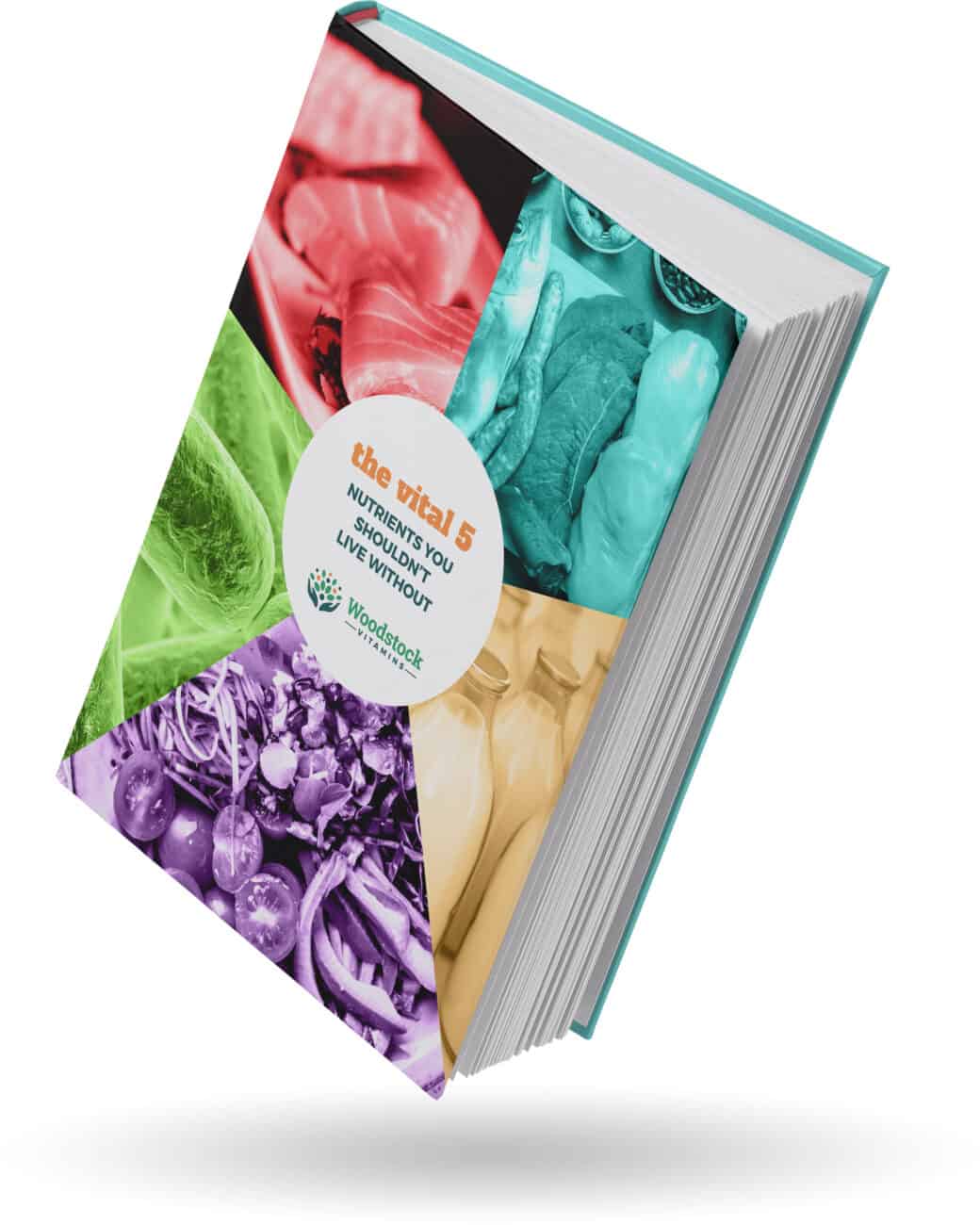To raise money, I’m going to start a live stream of our employee snack table. For a low subscription fee or via ad revenue, I’ll become a billionaire as people watch all 4 phases of addiction come to light. Addiction not with any of the dangerous, addictive opioids or medicines we carry at the store, but with the cookies and treats we are gifted with by our lovely customer family. Soon I’ll be going by “The Double Chinned Pharmacist.”
While we may proudly proclaim, “”I wouldn’t DARE drink soda!”, the evidence shows too many of us get far too much sugar in our diet. Sugar isn’t just the white stuff found in cookies and kid’s drinks, it’s crammed into almost every food on the inside aisles of grocery stores.
Is the reason we’re getting so much of this harmful substance because we are simply addicted to it? It’s a cliche on the internet… “Sugar is toxic, sugar is an addictive compound, sugar is bad bad bad!” Does sugar properly qualify as an addiction?
Let’s clear the air and take a deep dive into sugar, then determine if we are really without agency as it pertains to the sweet goodness that is sugar.
First, let’s get our definition of sugar straight.
Sugar vs “Sugar”
The phrase “sugar is bad for you” is a bit silly to me. Everything has to be black and white now, right? It’s important for us to distinguish between the two types of sugar: the uber important, life sustaining, fuel-source (and related compounds) and Swiss Cake Rolls.
All sugar isn’t bad. In fact, no sugar is bad. Much like the gluten-free revolution of the 2010s, the problem isn’t the thing, it’s in our insane overconsumption of the thing. We eat too much sugar – whether directly via snacky cakes and the like, or via hidden sugars in our packaged, processed, barcode-laden “foods.”
Sugar is the overarching name we give all carbohydrates made up of or related to glucose. They can exist as individuals (monosaccharides), paired up (disaccharides), or in long chains (polysaccharides). If I list these out in tabular format, does that become table sugar? HA!

What differentiates these sugars is where they are found naturally and their relative sweetness level. As you can see, on the sweetness scale, fructose is crack. Or at least I think that’s what the X axis is measuring…
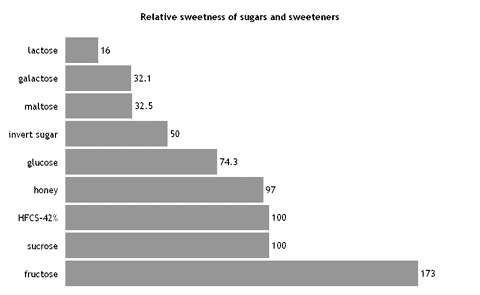
In the end, they all get metabolized into glucose, which is our prime fuel source. In case it’s been a while since college biology, here’s a review of the first week of school:
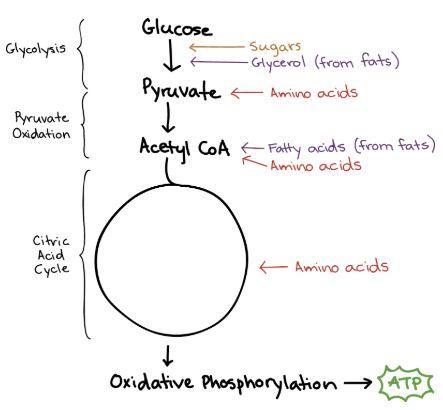
ATP is the energy you need to get through a day as a slave to modern capitalism. As you can see, sugar isn’t bad – it’s necessary. But, “sugar” is pretty much the compound responsible for all our modern health problems – obesity, diabetes, heart disease, and MUCH more.
Because of this, I call sugar “the gift that keeps on taking away.”
There are two problems with sugar, as I see it. First, as I’ve mentioned, is our overconsumption of it. Let’s talk about how gross we are…
How Much Sugar Do We Eat?
Sugar intake statistics are my favorite! It’s just so gross how much we actually consume, especially when we put it into terms we can all relate to. I like to talk about sugar intake in teaspoonfuls. In this way, you can imagine that white crystalline goodness on a spoon and instantly feel what that would be like to put that much raw sugar in your mouth at once. Is your mouth watering, but with a hint of over sweetness? That’s a pretty powerful compound to be able to do that without it hitting your lips!
In teaspoons, we’re supposed to get only about 13 teaspoonfuls a day (from all sources), but on average we’re over 43 teaspoonfuls daily! The average pharmacist/supplement guru/blogger consumes 43 teaspoons per hour, but that’s less shocking…
Most of this volume is VERY recent. About 200 years ago, we’d have about 2 pounds of sugar a year total. In the 70s, we were up to 123 pounds annually. Today, we’re over 150 pounds a year, which is like 3 pounds a week. That would be like eating all three of my triplet 9 year olds annually, if they were sugar.
We’re consuming about 50 times the sugar that we ate just 200 years ago.
A simple graph shows this best:
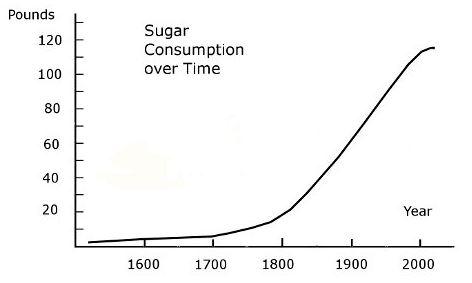
Most modern nutrition and health associations recommend less than 10%, but ideally less than 5% of total caloric intake from all sources of sugar. For most of us, that’s 25-50 grams of total sugar daily. To compare it against our 200 year old stats, that’s still 40 pounds a year today vs 2 pounds then. We eat more sugars because of our modern, varied diet, which includes access to fruits and vegetables we didn’t have access to then.
This problem of overconsumption starts at childhood. Pediatric groups recommend sugar AND fat intake for kids be between 5 and 15%, yet most kids are well over 16%.
There’s a lot to blame for this intake, but most of it is the lengths that are taken to hide the sugar.
Sugar: Hiding In Plain Yogurt – I Mean Sight
Oh the lengths manufacturers will go to hide the fact they are plowing their gross foods with insane amounts of sugar so they taste better.
There’s no requirement for manufacturers to differentiate between ADDED sugar and naturally occurring sugars. My favorite example is yogurt. A well-made, full-fat yogurt like Fage will be low in simple carbs and sugars, but rich in fat and protein. Compare this to the yogurt flavored pudding most of us eat – sugars are 2-3x the amount that should be naturally occurring, while the other healthy macronutrients like proteins and fats are very low.
This highlights a big problem held over from the 80s and 90s. We were told fats were the root of all evil, so we moved to fat-free packaged foods. The problem is, fat-free foods taste like garbage unless you sweeten it SOMEHOW, and they do so with sugar.
We got smart and wanted to use less and less sugar, but the food industry went to great lengths to hide it by calling sugar something else. There have been compiled about 61 different names for sugar. Here they are, for completeness sake:
- Agave nectar
- Barbados sugar
- Barley malt
- Barley malt syrup
- Beet sugar
- Brown sugar
- Buttered syrup
- Cane juice
- Cane juice crystals
- Cane sugar
- Caramel
- Carob syrup
- Castor sugar
- Coconut palm sugar
- Coconut sugar
- Confectioner’s sugar
- Corn sweetener
- Corn syrup
- Corn syrup solids
- Date sugar
- Dehydrated cane juice
- Demerara sugar
- Dextrin
- Dextrose
- Evaporated cane juice
- Free-flowing brown sugars
- Fructose
- Fruit juice
- Fruit juice concentrate
- GlucoseGlucose solids
- Golden sugar
- Golden syrup
- Grape sugar
- HFCS (High-Fructose Corn Syrup)
- Honey
- Icing sugar
- Invert sugar
- Malt syrup
- Maltodextrin
- Maltol
- Maltose
- Mannose
- Maple syrup
- Molasses
- Muscovado
- Palm sugar
- Panocha
- Powdered sugar
- Raw sugar
- Refiner’s syrup
- Rice syrup
- Saccharose
- Sorghum Syrup
- Sucrose
- Sugar (granulated)
- Sweet
- Sorghum
- Syrup
- Treacle
- Turbinado sugar
- Yellow sugar
Some of them sound oh so enticing, don’t they? Muscovado sounds super healthy and exotic. Is it an avocado’s cousin? Is it a new fancy sports car?
So when you read a label and 3 of the ingredients are organic cane sugar, molasses, and fruit juice, that’s really just sugar, sugar, and sugar.
Agave is a great example of how a waste product from one manufacturing process can be packaged as a high-end consumable when marketed correctly. Using agave as a “natural sweetener” was a HUGE trend about 5 years ago or so, but the truth is that agave contains 55-97% fructose, while high fructose corn syrup averages closer to the 50% mark.
Then there’s this trend to take a noble stand about their added sugar. “We don’t use high fructose corn syrup, we use Organic Cane Sugar!” You can put organic in front of everything and it sounds high quality and pure, despite the fact that organic standards have been becoming more and more lax over time. Cane sugar itself sounds so enticing! I don’t use that low-class regular sugar stuff, I use “Cane Sugar” that I buy at Whole Foods for $10 an ounce. No matter how sweet it sounds, sugar is sugar, and we’re getting too much of it.
Added sugar is in almost all packaged foods – nearly 74% of them, by one study’s measurement. There’s one added sugar that’s quite the troublemaker…
Fructose is Fruct Up
(That quote is thanks to Hannah, one of my wonderful employees!)
Fructose, found primarily in plants, is the most despised of all the sugars, for sure. But why? It’s what makes fruits taste awesome! It’s SUPER sweet, as shown by our graph before! Why is it an enemy of the state?
Fructose hate, again, has more to do with our overconsumption of fructose than it does to it being “bad” or “good.” With all of the corn subsidies in this country and our capitalist desire to squeeze every drop of profit out of everything, corn plants were a great source of unused fructose. We can concentrate that sweetness into an atomic bomb of flava, known to you and me as High Fructose Corn Syrup.
High Fructose Corn Syrup (HFCS), being a super cheap and bountiful raw material, was subsequently put into everything – approximately 40% of all added sweetners are HFCS. HFCS contains approximately 55% fructose, but can contain up to 90% fructose. Sucrose is 50% fructose, so it’s not tremendously horrific, on average, from regular added sugar.
Let’s look at what happens in our body when we ingest glucose:
- Eat foods containing glucose
- Glucose goes into the bloodstream
- Pancreas releases insulin to manage the blood glucose levels
- Insulin in the blood causes fat cells to release leptin, a hormone that tells you to stop eating
With fructose, it’s a bit different. Fructose doesn’t stimulate insulin secretion. Insulin isn’t around, then, to tell the body to make more leptin and eat less. Meals high in fructose cause leptin levels to stay low, resulting in overeating and subsequently obesity.
Overeating sugar, including fructose, over the long-term causes insulin AND leptin resistance. Your body doesn’t utilize the sugar correctly and that sugar can cause lots of damage to blood vessels. Your appetite increases because leptin just isn’t doing what it’s supposed to, so overeating becomes worse.
High fructose meals also produce spikes in triglycerides, a form of cholesterol that directly contributes to the hardening and clogging of arteries. If this wasn’t enough, there’s information showing a connection between high fructose intake, fatty liver, and liver disease. Without hyperbole, it seems fructose can be as harmful to the liver as alcohol.
These horrible effects of fructose exist solely because of 2 factors: First, the fructose is by itself. Fructose, when consumed in its natural state – via fruits and some vegetables – is not fruct up. The fiber and other nutrients allow the fructose to be properly processed, and the slight differential between it and glucose on insulin and leptin are negligible. Secondly, it’s the sheer amount we are taking in. When you consume excess amounts of fructose, especially as a sweetener and not from its natural sources, you’ll run headfirst into these health consequences.
No liver detox supplement will help you as much as reducing excess fructose from your diet.
Juicing is “Natural High Fructose Corn Syrup”
If we take something healthy like an orange and squeeze out the juice, what do you get? Water, some micronutrients, and LOTS of concentrated, naturally occurring fructose. I don’t know about you, but I can certainly drink the juice from multiple fruits MUCH easier than eating the equivalent amount of fruit in a single sitting. Usually, I’ll be yearning for more right after.
As we’ve previously mentioned, we’re not fans of juicing. Even at its healthiest, we’re removing 40% or more of the REALLY healthy stuff from a fruit or vegetable – the fibers and pulp. Not only are those good for our digestive health and cholesterol, they essentially “dilute” the free fructose and trigger normal processes that regulate blood sugar levels in a more healthy manner than the alternative.
If you want to juice, don’t. Make smoothies instead, where the whole fruit (sans peels) is incorporated – fibers AND fructose.
To ensure all of the nuances are covered, I will say it again: fructose isn’t the enemy if it is consumed in its natural state, among plant fibers and other micronutrients. When we isolate fructose, concentrate it, and glom it into already unhealthy foods to make them taste better, we increase our risk of overeating, obesity, high triglycerides, fatty liver, and more.
So sugar is hidden in many of the products we consume. Fructose, in particular, has been a major component of our modern diets and that itself leads to all these health problems. These aren’t the problems – they’re symptoms of the problem.
The second problem with sugar, and the reason it is used so heavily by food manufacturers, is that it truly is an addictive compound.
Addiction Traits
Sugar being an addictive compound has, up until recently, been considered pseudoscience. Only within the past decade or so has it been investigated seriously. Many believed that such an essential, ubiquitous substance such as sugar couldn’t POSSIBLY be addictive. Addiction was left for other, more rare substances used merely for pleasure, with no other health or medical benefit.
As our understanding of the reward system, habits, and addiction has evolved, our definition of what can be addictive has expanded. Heck, we even know that video games can stimulate these same addictive parts of our brains (see World of Warcraft or the modern trend of “lootboxes”).
Here’s my not-so-scientifically backed OPINION/hypothesis of why we CAN be addicted to any substance: We evolved with the behavior-reward system to motivate us to find good, healthy foods. It just so happens that some OTHER compounds can activate those same centers of the brain. Those cue-reward systems can be triggered psychologically, not just physically with chemical compounds like heroin or sugar. Basically, the operating system is there, some programs run normally, but some can exploit the systems, producing ramped up effects.
The programming is there for sugar and it’s pretty evident why. The 200,000 years or so evolution we’ve undergone hasn’t had enough time to factor in or adapt to the mainlining of fructose et al of the past 50.
A pretty comprehensive experiment showed sugar’s impact in an animal study. They looked at the 4 Horsemen (Ratmen?) of the Sugar Apocalypse – the 4 behavior characteristics of substance abuse:
- Bingeing – excessive intake in single sittings
- Withdrawal – signs of anxiety or even depression when sugar isn’t present
- Craving – enhanced response to sugar (rushing to the bowl!)
- Cross-Sensitization – the opening of the floodgates, from eating a few extra cookies to greasy burgers and french fries.
Looking at those 4 characteristics, it’s quite easy for us all to say, “No duh it’s addictive, I’ve seen this myself!” Despite all scientific evidence and animal models, one could identify sugar’s addictive properties by my personal anecdotes alone. I blow through all phases, seemingly at once. Put a bag of kettle corn in front of me. I’ll binge eat that until my jaw hurts…
There are a couple of other great studies looking at the scientific validity of sugar addiction. If you are bored, check them out here (Brownell, K.D., & Gold, M.S. (2012). Food and addiction: A comprehensive handbook. () Oxford University Press.) and here (Sugar Causes Craving and Withdrawal, changes in the reward center Volkow, N.D., & Li, T.-K. (2004). Drug addiction: the neurobiology of behaviour gone awry. Nature Reviews Neuroscience, 5(12), 963-970.).
Because excess sugar is so good at scratching an evolutionary itch, we have to come up with a strategy to identify and manage our own compulsion towards sugar. Or, if you are unlike me and are a well-adjusted human, we should talk about ways to limit our intake because you aren’t an addict.
Managing Sugar Intake
How do we get our sugar intakes back to normal? The first step is admitting you have a problem.
Look at your psychological relationship to sugar. Try to be more mindful – be aware of the patterns – the preprogrammed routines you are going through without thought. A dopamine burst is a powerful way to help mitigate feelings to anxiety or depression. For a moment, it quiets the noise. But only for a moment, as then you begin to crave more, but the dopamine surge is never as strong with the same dose. You have to keep increasing your intake!
Personally, if I get a little frustrated, I instantly crave sugar.
Remove yourself from the situation. Don’t buy processed, packaged foods. Use real, whole foods. Avoid the breakroom. Don’t stock your pantry full of sugar-heavy foods.
Eat to fuel your fire. A lot of time, sugar cravings come because your body needs a quick source of energy and it’s trying to get it asap. If you follow our campfire diet strategy, you will be supplying your body with multiple fuel sources – carbs, proteins, and fats – at regular intervals, BEFORE you get too hungry. Eating proper foods regularly will greatly reduce your simple carb cravings.
Stay hydrated. Fluids are a good way to stop sugar cravings. Even better, fill a pitcher at dinner time with water and put in some of your favorite fruit – blueberries, strawberries, or kiwis, for example. This will flavor your water and infuse it with some sweetness. Just don’t forget to eat the fruit, too!
Don’t look to supplements. You want to optimize your wellness, but you’re plowing down excessive sugar? No supplement or therapy will help you. If there was something that TRULY helped people with cravings, I think it would be the best selling product in America. It would also be prescription only, probably a controlled substance, and about $4000/month.
Cheek it. Just like nicotine gum, place a small sugary treat in your cheek and let it sit there. I’d prefer it if you chose a blueberry, but I guess a square of dark chocolate or a chocolate chip could work too.
If you are going to consume a sugar-rich food, just be more mindful about it. Take your time. Savor it. Let it hit all the receptors in your mouth. Get the full blast of dopamine.
Do You Need A Sugar Cleanse?
We’ve weighed in on cleanses before, but let’s review. Cleanse products are typically combinations of laxatives and nonabsorbable compounds. These compounds form weird shapes mimicking the tubes of our GI tract, so when we evacuate and see them, we feel we’ve successfully gave our pipes a good cleaning. Your GI tract isn’t 80 year old iron pipes with calcium deposits, though.
Cleanse products use parlor tricks to give you a sense of accomplishment. Many commercially available cleanses are unhealthy, overpriced, and can be unsafe.
Cleanses aren’t necessary physically, but may serve a purpose psychologically. It’s like hitting the reset button, and dramatic moves may help with successful habit changes. I’d prefer a cruise ship that looks to the horizon and cuts the direction 2-5 degrees than one that tries to do a 90-degree turn at the last minute.
If you’d like to cleanse, do the following:
- Eliminate all simple carbs – sugars, white bread, sauces, pasta.
- Use only whole grains, if any.
- Increase your fluids.
- Increase dark, leafy green intake
- Cut out caffeine, alcohol, and artificial sweeteners
If you take a dramatic approach via a healthy cleanse, do so for 3-7 days, then move back towards a normal diet – one that severely limits simple carbs, especially added ones, from your diet.
Sweetener Substitutes
Sometimes you just need some sweet stuff. There are sweeteners you can use in place of sugar. Artificial sweeteners should be avoided, and sugar substitutes should be minimized.
Here are 2 of my favorites:
Sugar Me Sweet
I have a few pet peeves. One of them is the word “salve.” It’s just weird. The other is sugar-free cough syrup “for diabetics.” It’s truly a reflection of our understanding of sugar and its role in disease; we micromanage the sugar content in something like cough syrup, yet overconsume foods posing as healthy that use synonyms for sugar to hide how gross it really is.
Sugar exhibits properties of other addictive substances of abuse. Many of us need to recognize how much it consumes us AND how much we consume of it.
Getting control of sugar starts with reducing, if not completely eliminating added sugars from our diet. Then, healthy eating habits along with mindfulness can help you stay on track.
My final suggestion, though, is to wait until after the holidays to start 🙂
Just trying to keep it real…

Neal Smoller, PharmD
Owner, Pharmacist, Big Mouth


